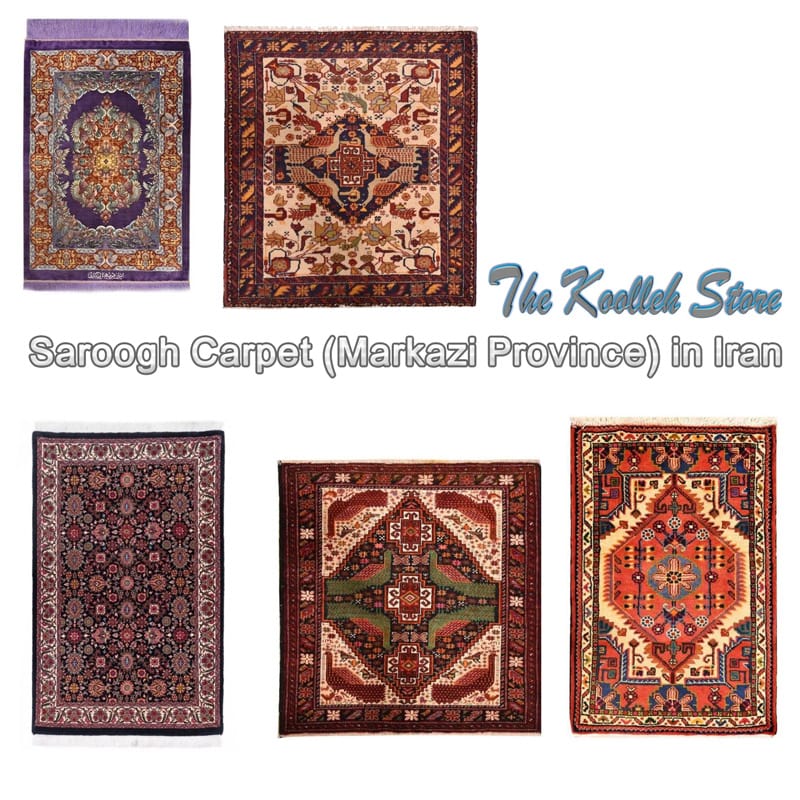Saroogh Carpet (Markazi Province) in Iran

Carpet weaving is the most important Saroogh industry. In the past, most Saroogh rugs were inspired by the role of bergamot. These carpets, due to their small texture and short lint, looked like a hard board and the color of most of them was cream and azure.
These features made Saroogh rug popular in Iran and worldwide. However, there are already changes to the map, color, text and length of the villi. The maps are in the form of a global floral and leaf design. 80% of the text is muddy and the height of the villi is 10 mm, which is woven with 25 to 35 folds per knot in Persian style.
Currently, more than 60% of carpet production in Arak is Saroogh type. In these carpet designs, there is always some kind of pain in the uniform. So that there is little variation in the maps. The difference between Saroogh rugs and other areas is in the use of knots. This means that the Saroogh rug uses the Persian knitting knot.
Map and Design of Saroogh Carpets and Rugs
Half of the beauty of rugs and rugs is due to the creative mind and artist of carpets and painters. Each carpet is woven according to a pre-designed design called a map. This map is a model of painting that the more beautiful and pleasing the woven carpet beauty becomes. It can therefore be said that not only is Saroogh the artist’s carpet weaving but that the great designers are capable of world renown. Although these maps are currently used in various parts of Iran and the Saroogh map is no longer the sole monopoly of Saroogh rugs, it is also remembered elsewhere where these maps are used, recalling Saroogh rug maps. .
Great masters have been working on Saroogh carpet mapping, with valuable work left over, including Professor Isa Bahadori, who once held the Isfahan Carpet Conservatory. One of the masterpieces of this master artist is the carpet map of humanity, still carved by Bafan Arak and Saroogh.
Other old masters of Saroogh’s name are prolific masters: Abtahi, Hooshangi, Chegni, Culture, Sadar Abadi, and Tehrani Brothers. The main drawers are Saroogh maps.
The original Saroogh maps include: Chicken and fish maps, Mustofi, curtains and flowers. Machine drawings, curtains, European screws, King Abbasi, Afshan and bergamot are among the designs that were later cited as Saroogh carpet patterns.
One of the most beautiful effects of carpet weaving in Saroogh is the image rugs. Parviz Ghobadi has studied these types of rugs in the valuable book of Image Rugs in Iran.
Carpet weaving and religious beliefs in Saroogh
Carpet weaving is part of the lives of the people of the Saroogh region in a way that their threads are intertwined with the fabric of their lives and their roles reflect the roles of their thoughts, feelings, tastes, desires and values. In the carpets of this region, the history, economics, art and culture of the people of this region are exemplified to the extent that Saroogh is a lifeless body without its carpets. The industry has been maintained in Saroogh for about 700 years.
